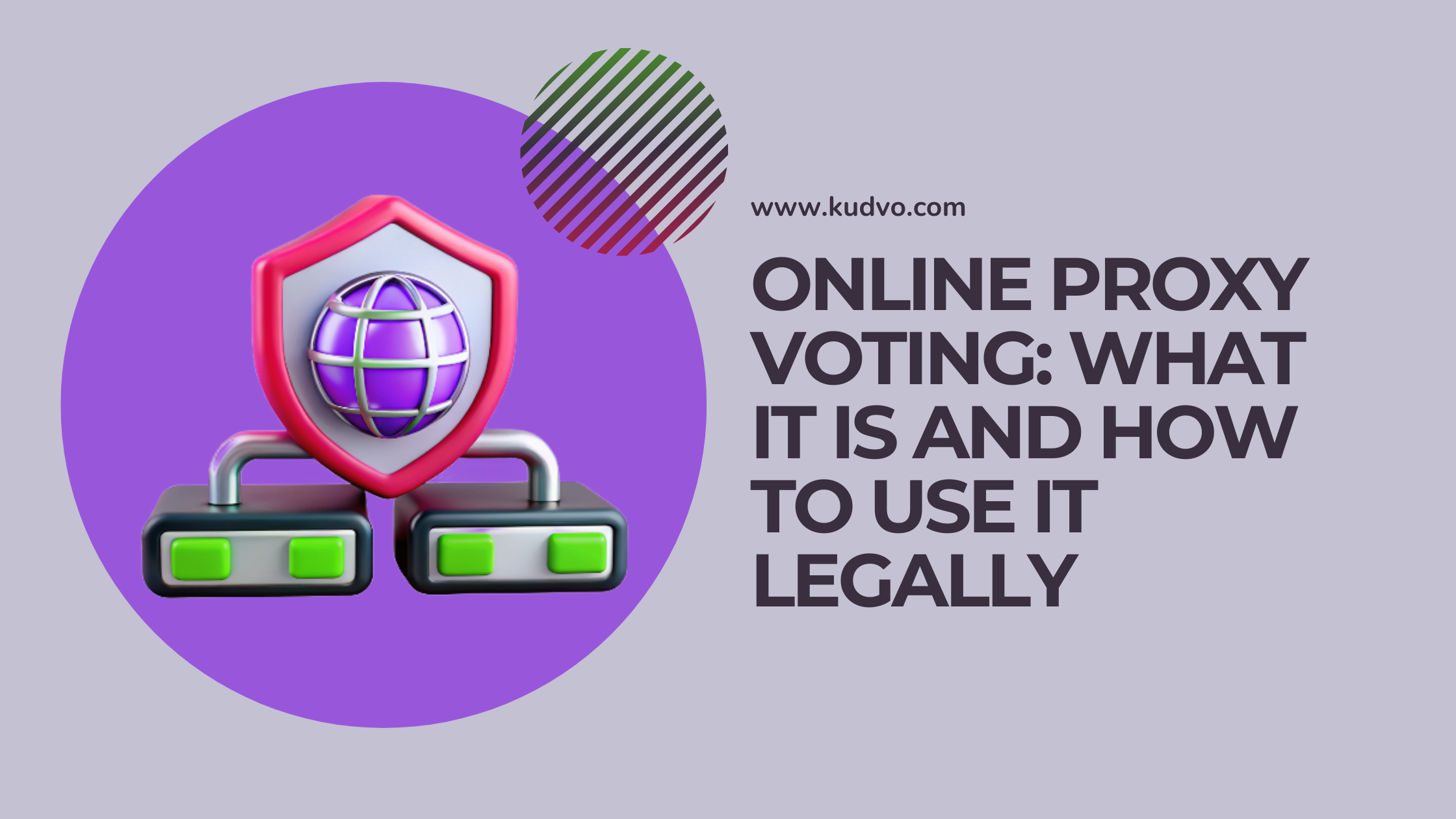Online Proxy Voting: What It Is and How to Use It Legally
Introduction
Can’t attend a meeting but still want your vote to count? You’re not alone. In a world of remote work and digital communities, being physically present for every decision isn’t always possible. That’s where online proxy voting comes into play.
Proxy voting lets someone else vote on your behalf. And thanks to modern tools, it’s now easier—and more legally valid—than ever to do this online.
In this post, we’ll explain what proxy voting is, how it works online, and the legal best practices to keep your group compliant and transparent. Whether you're part of an HOA, nonprofit board, company, or digital community, you'll walk away ready to use proxy voting the right way.
We’ll also highlight Kudvo, a simple platform that helps you run online votes (including proxies) with ease.
What Is Proxy Voting?
At its core, proxy voting means authorizing someone else to vote on your behalf at a meeting or election when you can’t attend.
How It Works
You give written permission to a proxy holder (a person you trust).
That person casts your vote according to your instructions, or at their discretion, depending on the arrangement.
The vote is counted as if you were present.
Common Use Cases
Homeowners associations (HOAs)
Company shareholder meetings
Nonprofit board elections
Club or union meetings
Online communities and DAOs (Decentralized Autonomous Organizations)
Key Terms to Know
Proxy: The person authorized to vote on your behalf.
Principal: The person giving the authority (that’s you).
General Proxy: The proxy can vote on all issues at their discretion.
Limited Proxy: The proxy can only vote on specified issues or in a certain way.
How Proxy Voting Works Online
In the digital age, proxy voting doesn’t require paper forms or in-person meetings. It can be handled entirely online—with proper documentation and secure tools.
1. Digital Authorization
Voters can submit a proxy form or declaration online. This can be done via:
Email
Online voting platform (like Kudvo)
Secure Google Form or e-signature service
Make sure the authorization includes:
Voter’s full name
Proxy’s name
Date of the vote/meeting
Voting instructions (if any)
Digital signature or confirmation
2. Secure Voting
Once proxy forms are collected:
The proxy holder can vote on behalf of multiple people.
Platforms like Kudvo can automate this, tracking which votes were cast by proxy.
The organization should keep a record of each proxy for transparency and audits.
3. Verification & Record-Keeping
To keep things legal and clean:
Ensure your group’s bylaws allow proxy voting (some require specific formats).
Keep records for at least a year, including timestamps and authorization proof.
Double-check that all proxy votes follow the scope of the voter’s intent.
Is Online Proxy Voting Legal?
Yes, online proxy voting is legal—but there are rules.
1. Check Your Bylaws or Governing Docs
Before setting up proxy voting:
Review your organization's bylaws or articles.
Some require written proxies, others accept electronic ones.
Make sure your process matches what’s permitted.
2. Follow State or Jurisdictional Laws
Legal requirements vary depending on:
State (for U.S. nonprofits, HOAs, corporations)
Country (if you're international)
Type of organization (LLC, 501(c)(3), cooperative, etc.)
For example:
Many U.S. states now accept e-signatures and digital forms under the UETA (Uniform Electronic Transactions Act).
In Canada, most provinces allow digital proxies if they’re properly documented.
3. Maintain Transparency
To avoid disputes or legal headaches:
Keep a log of who gave proxy and how it was used.
Share results openly.
Clarify voting procedures before the event.
Best Practices for Using Online Proxy Voting
Want to make proxy voting seamless and compliant? Follow these tips:
✅ Use a trusted platform: Tools like Kudvo are designed to handle proxies legally and transparently.
✅ Set clear deadlines: Give voters a cutoff to submit proxy authorizations before the meeting.
✅ Communicate clearly: Explain how proxy voting works in your invites and reminders.
✅ Keep it accessible: Use mobile-friendly forms and make sure voters can assign a proxy easily.
✅ Audit after voting: Review results and document everything.
Conclusion
Online proxy voting makes it possible for more people to participate—even when life gets in the way. With the right tools and a little legal awareness, your organization can boost turnout, improve fairness, and make better decisions.
To recap:
Proxy voting lets someone vote on your behalf.
It’s legal online, as long as you follow your bylaws and local laws.
Tools like Kudvo simplify the process and ensure compliance.
Ready to empower your group with secure, modern voting? Give online proxy voting a try—and never miss a decision again.
